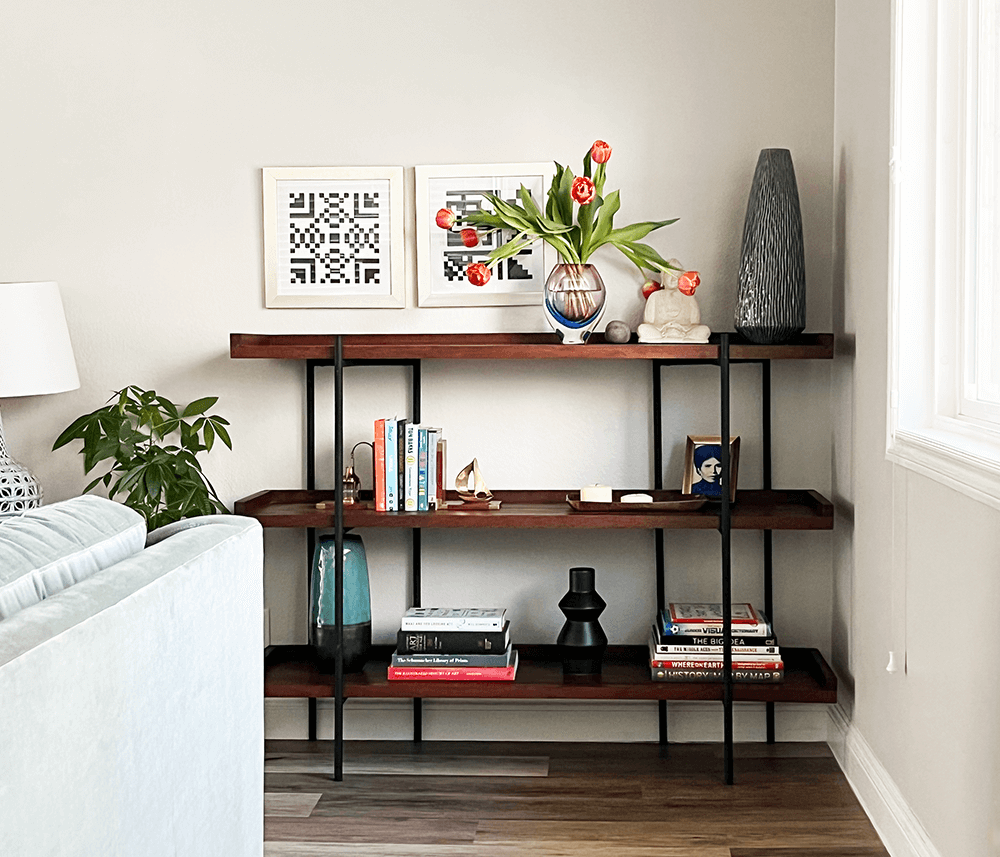“The Comforting Embrace of Warm Minimalism: A Guide to Creating a Sanctuary
Artikel Terkait The Comforting Embrace of Warm Minimalism: A Guide to Creating a Sanctuary
- Transform Your Home, Transform Your Mood: Mood-Boosting Decor Ideas
- Dorm Room, Dream Room: Mastering The Art Of College Dorm Decor
- The Arch Mirror: A Timeless Elegance Shaping Modern Homes
- Beyond Decoration: Unveiling The Power Of Multipurpose Home Accents
- The Comforting Embrace: A Comprehensive Guide To Cotton Throw Blankets
Table of Content
Video tentang The Comforting Embrace of Warm Minimalism: A Guide to Creating a Sanctuary
The Comforting Embrace of Warm Minimalism: A Guide to Creating a Sanctuary

In a world often characterized by relentless noise and visual clutter, the desire for simplicity and tranquility has fueled the rise of minimalism. But for some, the stark, clinical aesthetic of traditional minimalism can feel cold and uninviting. Enter warm minimalism, a design philosophy that embraces the core principles of simplicity and functionality while injecting warmth, texture, and personality to create a truly comforting and livable space.
Warm minimalism isn’t about sacrificing the essence of minimalism. It’s about softening the edges, infusing a sense of welcome, and cultivating an environment that feels both curated and cozy. It’s a mindful approach to design that prioritizes quality over quantity, natural materials over synthetics, and personal connection over impersonal perfection.
The Guiding Principles of Warm Minimalism:
To truly understand and implement warm minimalism, it’s essential to grasp its foundational principles:
- Intentionality: This lies at the heart of all minimalist approaches. Every item within the space should serve a purpose and contribute to the overall aesthetic. Clutter is actively avoided, and each possession is carefully considered before being brought into the home.
- Quality over Quantity: Investing in fewer, high-quality pieces is a cornerstone of warm minimalism. This allows for greater appreciation of craftsmanship and ensures longevity, reducing the need for constant replacement. Think durable materials, timeless designs, and pieces that tell a story.
- Neutral Color Palette with Warm Undertones: While minimalism often leans towards stark whites and grays, warm minimalism embraces a more nuanced palette. Think creamy whites, soft beiges, earthy browns, and muted greens. These colors create a soothing and inviting atmosphere.
- Natural Materials: Incorporating natural materials like wood, linen, wool, rattan, and stone is crucial for adding warmth and texture. These materials bring a sense of organic beauty and connect the space to the natural world.
- Texture and Tactility: Texture is key to preventing a minimalist space from feeling sterile. Think woven rugs, chunky knit blankets, linen curtains, and textured ceramics. These elements add depth and visual interest, making the space more inviting to touch and interact with.
- Soft Lighting: Harsh, bright lighting can detract from the cozy ambiance. Warm minimalism prioritizes soft, diffused lighting through lamps, candles, and natural light. Dimmable fixtures allow for adjusting the lighting to create the desired mood.
- Personal Touches: While minimalism emphasizes decluttering, warm minimalism encourages incorporating personal items that hold meaning and evoke positive emotions. These could include family photos, travel souvenirs, or handcrafted art pieces. The key is to curate these items thoughtfully and display them sparingly.
- Biophilic Design: Incorporating elements of nature, such as plants and natural light, is essential for creating a calming and restorative environment. Plants not only add visual interest but also purify the air and boost overall well-being.
:max_bytes(150000):strip_icc()/Warmminimalismlivingroomwithcouch-054286efe5bb45898a4d14b08a979154.jpg)
Implementing Warm Minimalism in Your Home:

Now that we understand the core principles, let’s explore how to apply them to different areas of your home:
1. Living Room:
- Furniture: Opt for comfortable, low-profile furniture with clean lines and soft upholstery in neutral colors. Consider a linen sofa, a wooden coffee table, and a woven area rug.
- Textiles: Layer textiles to add warmth and visual interest. Throw blankets, cushions, and curtains in natural materials like linen, wool, and cotton will create a cozy atmosphere.
- Lighting: Use a combination of ambient, task, and accent lighting. Floor lamps, table lamps, and recessed lighting can be used to create a warm and inviting glow.
- Accessories: Keep accessories minimal but meaningful. A few well-chosen art pieces, a collection of books, and a vase of fresh flowers can add personality without overwhelming the space.
- Greenery: Incorporate plants to bring life and freshness into the living room. Potted plants, hanging plants, and even a small indoor tree can make a big difference.

2. Bedroom:
- Bedding: Invest in high-quality bedding in natural materials like linen or cotton. Layer blankets and throws for added warmth and texture.
- Furniture: Keep the furniture simple and functional. A bed frame, a nightstand, and a dresser are usually sufficient.
- Lighting: Create a relaxing atmosphere with soft, warm lighting. Bedside lamps with dimmable bulbs are a great option.
- Accessories: Keep accessories to a minimum. A few personal items, such as a framed photo or a favorite book, can add a personal touch.
- Color Palette: Stick to a calming color palette of neutral tones with warm undertones.
3. Kitchen:
- Cabinetry: Opt for simple, clean-lined cabinets in natural wood tones or painted in a neutral color.
- Countertops: Choose durable and aesthetically pleasing countertops in materials like wood, stone, or concrete.
- Backsplash: A simple tile backsplash in a neutral color can add texture and visual interest.
- Appliances: Choose appliances with clean lines and a minimalist aesthetic.
- Accessories: Keep the countertops clear of clutter. A few essential items, such as a wooden cutting board and a ceramic utensil holder, can be displayed.
- Dining Area: A simple wooden table and chairs can create a warm and inviting dining space.
4. Bathroom:
- Fixtures: Choose simple, clean-lined fixtures in a neutral finish.
- Tiles: Opt for natural stone or ceramic tiles in a neutral color.
- Accessories: Keep accessories to a minimum. A few essential items, such as a wooden soap dish and a linen towel, can be displayed.
- Lighting: Create a relaxing atmosphere with soft, warm lighting.
- Greenery: Incorporate a plant to add a touch of nature.
The Benefits of Warm Minimalism:
Beyond its aesthetic appeal, warm minimalism offers a range of benefits:
- Reduced Stress and Anxiety: A decluttered and organized space can promote a sense of calm and reduce stress levels.
- Increased Productivity: A minimalist environment can help to improve focus and concentration, leading to increased productivity.
- Improved Sleep Quality: A calming and relaxing bedroom can promote better sleep quality.
- Greater Appreciation for Possessions: By owning fewer items, you can develop a greater appreciation for the things you do have.
- Reduced Environmental Impact: By consuming less and investing in durable, high-quality products, you can reduce your environmental footprint.
- Enhanced Well-being: Creating a home that feels comfortable, welcoming, and authentic can significantly enhance your overall well-being.
Challenges and Considerations:
While warm minimalism offers numerous benefits, it’s important to be aware of potential challenges:
- Finding the Right Balance: Striking the right balance between minimalism and warmth can be challenging. It’s important to avoid creating a space that feels too sterile or too cluttered.
- Cost: Investing in high-quality, durable pieces can be expensive upfront. However, in the long run, it can save money by reducing the need for frequent replacements.
- Letting Go: Decluttering can be emotionally challenging, especially when it comes to items that hold sentimental value.
- Maintaining Minimalism: Maintaining a minimalist lifestyle requires ongoing effort and commitment. It’s important to be mindful of your consumption habits and avoid accumulating unnecessary possessions.
FAQ: Warm Minimalism
Q: Is warm minimalism just a trend?
- A: While design styles evolve, the core principles of warm minimalism – simplicity, functionality, and comfort – are timeless. It’s less of a fleeting trend and more of a thoughtful approach to creating a more intentional and livable home.
Q: How is warm minimalism different from Scandinavian design?
- A: Both share similarities in their emphasis on simplicity, natural materials, and functionality. However, warm minimalism often incorporates richer textures, deeper colors, and more personal touches than traditional Scandinavian design, which can sometimes lean towards a more stark and minimalist aesthetic.
Q: Do I have to get rid of all my colorful items?
- A: Not necessarily! While a neutral color palette is central, you can incorporate pops of color through artwork, textiles, or decorative objects. The key is to use color sparingly and intentionally, ensuring it complements the overall warm and inviting atmosphere.
Q: What if I’m not naturally a minimalist?
- A: Warm minimalism is a journey, not a destination. Start small, focus on decluttering one area at a time, and gradually incorporate the principles of the style. The goal is to create a space that feels comfortable and authentic to you.
Q: Can I achieve warm minimalism on a budget?
- A: Absolutely! Focus on decluttering and rearranging existing furniture, incorporating natural elements like plants and branches, and shopping for secondhand or vintage pieces. You can also create your own art or DIY projects to add personal touches without breaking the bank.
Conclusion:
Warm minimalism offers a refreshing approach to design that prioritizes comfort, functionality, and personal connection. It’s about creating a sanctuary where you can relax, recharge, and connect with the things that truly matter. By embracing the principles of intentionality, quality, natural materials, and personal touches, you can transform your home into a warm and inviting space that nourishes your soul and enhances your well-being. It’s a style that allows you to live with less, appreciate more, and create a haven that truly reflects your unique personality and values. So, embrace the comforting embrace of warm minimalism and create a home that feels both beautiful and deeply fulfilling.
